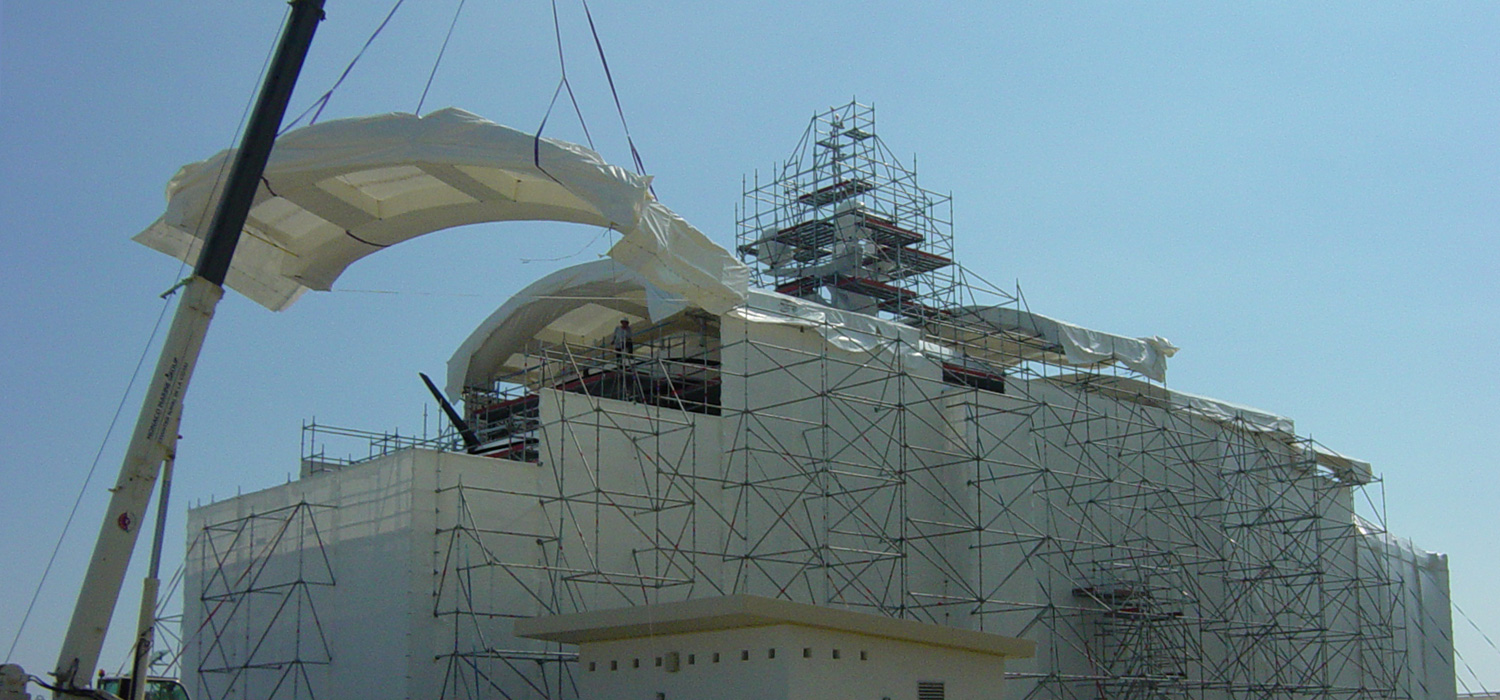SOLVED PROBLEMS
INNOVATIVE SOLUTIONS

TO DEVELOP PERFORMING HEAT-SHRINKABLE FILMS
The problem: for the carrying out of confined spaces in industry, it was necessary to obtain a reliable, operational and performing heat-shrinkable film being able to be implemented in the field from the phase of development in laboratory. The developments were made up to there in a blind way waiting for field returns.
Brought solution: to make easier these technical developments by the manufacturers, procedures of test in laboratory were refined. Correlations between the users feelings and the measurable, reliable and reproducible scales in laboratory were established.
The obtained qualifying tests feign the constraints field of users. They allowed the development laboratories to target their works and to be able of knowing well upstream the characteristics of the product to be tested as for example its weldability, its UV resistance or its qualification regarding fire. With this interface of tests, a new material can be pre-qualified even before its operational tests of validation in the field. The obtained results were very decisive, and these procedures remain used.

BAD WEATHER OF GROUND OPENINGS UNDER CONSTRUCTION
The problem: on the big ships under construction, openings in floors change according to the assembly and to the exposure to bad weather. The difficulty is to be able to protect these openings without delay in order to carry on the arrangement works.
Brought solution:
it was necessary to design light shelters, mechanically resistant to climatic constraints and movable either manually, or by lifting, to protect very quickly an open zone. The solution arises from the exploitation of a deposited patent upstream to this customer request. It was able to be applied to other problems such as in the Nuclear Power plants to limit the exposure to the radiation of the staffs, by the assembly of complete shelters in little exposed zone (ALARA) before moving them and positioning them on their zone of final exploitation.

BIG OPENINGS OFF WATER
on upper deck of big ships during construction works
The problem: historically, the protections of the big openings in upper deck of ships (Width 25m x Length 40m) under construction were made in hard shelters composed by scaffold supporting bi-slopes roofs made by metal sheets. Besides the very important costs, this technical solution showed the inconvenience of the weight and the mechanical constraints on these upper structures of ship.
Brought solution: by the study of a system of covers assembled on a complex system of cables, constituting a watertight cover with slopes and opposite slopes evacuating run off water towards the exhaust ducts of the side passageways. This compact and low height technical solution (only 2m height) permitted to reduce very significantly the realization budget while limiting the load on the superstructures of ships.
AEROACOUSTICS OF HELICOPTER BLADE TIPS
Coordination of 3 helicopter research subjects at the Rotorcraft Centre, University of Maryland, USA, publication AHS AIAA
The problem: a recurring problem on helicopters is their noise pollution in connexion with the aeroacoustics interactions between blades and air-vortices emitted from blade tips by the same rotor. It is particularly intensified in certain flight modes.
The vibratory research regarding the helicopter blades in the 90s was made for piezoelectric materials for their capacity to measure and to generate deformations in the structures admitting them. At that time, in the United States, three research works concerning the blades of the main rotor, were led at the same time in the same research centre of Maryland: the capacities of deformation in twisting helicopter blades by piezoelectric materials, the aerodynamic phenomena of blades interaction with the air-vortices of the blade tips of the same rotor, and finally the aeroacoustics of these same interactions blades/air-vortices.
Brought solution: a new area of research was imperative associating these three projects to show to scientific community the feasibility of the aeroacoustics decrease of the blade/air-eddies shock by a control of the blades twisting by piloted piezoelectric materials.
These results of research were the subject of publications (AHS, AIAA) and were taken back in reference in several later works. The vibratory control in the aeronautical domain with this type of materials made an important progress since that time.

AUTOMOTIVE ERGONOMICS RESEARCH
Specifications = removable seats for users: several French & European patents
The problem: in 1997, car manufacturers gave battle around their capacity to fit out the inside of their “monospace” : conceptual break regarding family vehicles brought by RENAULT with the “Espace” and then the “Twingo”. The challenge was then to be able to design modular inside spaces. For that purpose, seats were the subjects of big research investments: modularity, weight, three points belts in-car, anchoring easy-option and answering the structural specifications in case of an accident. In association with the Vehicles Engineering Department, these works were the focus of RENAULT Research Department.
Brought solution: the carried out work of reflection allowed to put forward several exploitable solutions in the industry. From the simple French patent to the European patent with prototypes of validation, some eight patents (two of them extended in Europe) could be deposited in 1997 and 1998 with Marc AMERIGO as inventor together with the department manager.

ALLOW HIGH SPEED PERFORMERS TO PUSH AWAY THEIR OWN LIMITS
Xavier Cousseau, WR run at 212Km/h. Edmond Plawczyk, end of run at 165kph
The problem: Beyond 100Km/h, the body is facing high aerodynamical instability. These fluid dynamics phenomena interact strongly with the practice of the extreme sport. By looking carefully at several disciplines like high speed mountain bike, snowboard ski and monoski, our purpose was to find solutions allowing these performers to get rid of these risky high speed zones.
Brought solution: Brought solution:Working closely with these top athletes, and highly qualified technical partners, has allowed us to intervene both in the wind tunnel and on their playground. The association of different specific appendices allows them to find some kind of comfort at high speed, and to express themselves again. They are even getting to use these new controlled air forces to reinforce their moves. For example, Edmond PLAWCZYK, former World Record holder in high speed snowboard (190kph), has been tested in a wind tunnel up to 202kph. It was absolutely impossible and dangerous without using the results of this work.
On the ground, the image above shows Edmond in April 2013 drawing perfect curves at some 130kph with a 206cm snowboard!




